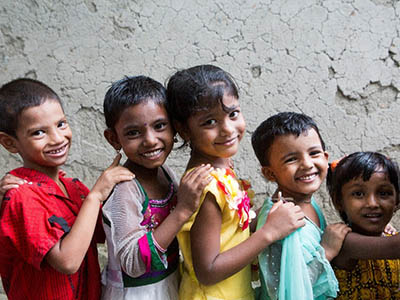This course examines UNICEF's approach to child protection systems strengthening, key interventions, and an assessment framework.
This course offers an in-depth look into UNICEF’s approach to child protection systems strengthening (CPSS), key interventions, and an assessment framework.
You will learn about: 
- Child protection systems and UNICEF’s approach to strengthening child protection systems
- The seven intermediate outcomes of child protection systems strengthening work
- The four-phase maturity model of CPSS and a framework to assess progress
- How to identify key interventions to accelerate systems strengthening work in a given context.
Learning Objectives
At the end of this course, you will be able to:
- Understand UNICEF’s approach to CPSS as found in the technical paper, Child Protection Systems Strengthening Approaches, Benchmarks and Interventions. This will lead to an improved understanding of the key considerations that guide UNICEF’s approach to CPSS; the programme–impact pathways of CPSS; and the seven intermediate outcomes of CPSS.
- Understand the maturity model for CPSS, including the 4 phases of CPSS; how intermediate outcomes and subdomains progress over these phases; the benchmarks for measurements; and the methodology to determine the level of maturity of CPSS.
- Determine high-priority interventions for CPSS, including how different contexts call for different types of interventions; a way of developing a list of high-priority CPSS interventions by country typology; key high-priority interventions and expected results.
An improved understanding of the above will enable learners to
- Examine the current state that child protection systems play within their own context.
- Understand the level of progress made in each of the seven intermediate outcomes of CPSS, thus enabling learners to determine the phase of CPSS in their own context.
- Identify high-priority interventions suitable to their own context to accelerate the process of CPSS.
In turn, participants will be able to communicate effectively and systematically with colleagues, counterparts (including from governments) and others about how CPSS happens, apply CPSS to their own context, and advocate for accelerating work to strengthen child protection systems. Learners will be able to do so because of their increased capacity to understand and apply the key elements of CPSS in the context of their child protection work.
Audience
This in-depth course is best suited for experienced child protection professionals working in a range of organisations, including:
- Governments
- National and international NGOs
- UNICEF staff at country offices, regional offices, and headquarters
- UNICEF National Committees
- Child protection consultants
Length
5-8 hours
Methodology
This course is composed of an introduction followed by three self-paced modules. Each component of the course introduces a key aspect of child protection systems strengthening. Each module contains a range of interactive videos, graphics, and other activities. There is a short knowledge check at the end of each module as well as a final quiz at the end of the course. The videos are available with or without audio, and a transcript is provided for each video.
Structure
This course is composed of three modules:
- The introductory module gives an overview of the course and an overview of child protection systems strengthening.
- Module 1 describes UNICEF's child protection systems strengthening approach and discusses some key considerations that have shaped this approach.
- Module 2 describes the need for measuring the effectiveness of CPSS interventions and provides a measurement framework for CPSS work.
- Module 3 introduces key high-priority interventions for systems strengthening.
- A final course quiz.
Contact Details
Content issues and questions: Aniruddha Kulkarni (ankulkarni@unicef.org)
